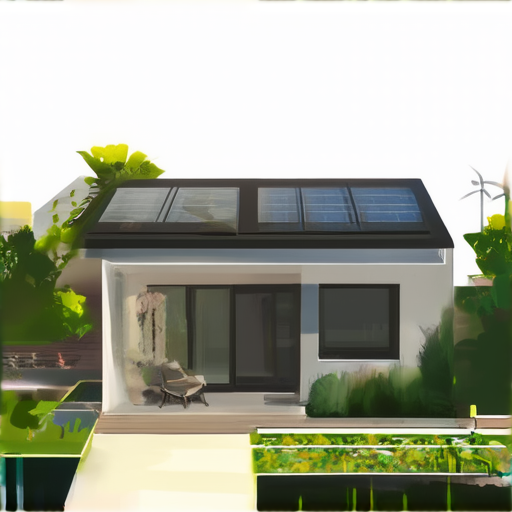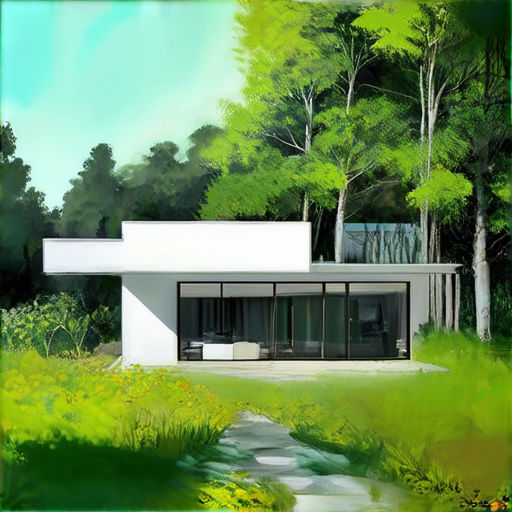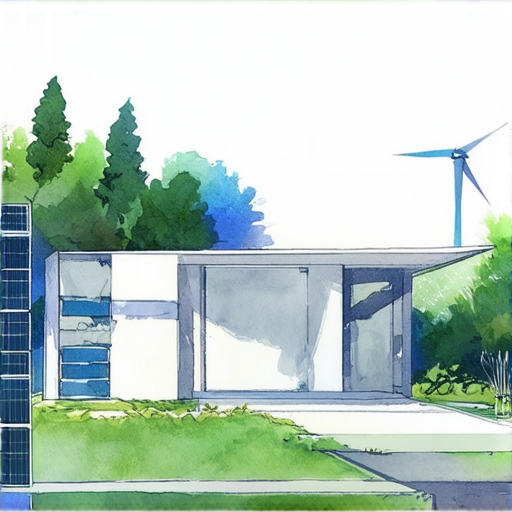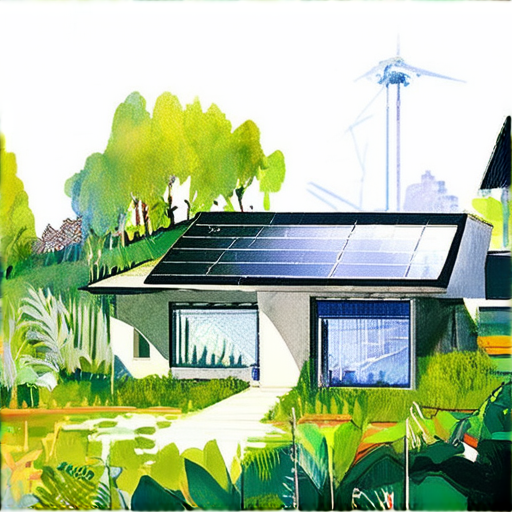As we continue to navigate the complexities of climate change and environmental degradation, it has become increasingly clear that our homes play a significant role in both contributing to and mitigating these issues. With the growing demand for eco-conscious living spaces, homeowners and architects alike are seeking innovative solutions that balance sustainability with style and functionality. By incorporating eco-friendly materials, sustainable design principles, and cutting-edge technologies, it is now possible to create homes that not only minimize their environmental footprint but also provide unparalleled comfort, livability, and aesthetic appeal.

Transforming Spaces, Sustaining the Planet: Expert Tips for Eco-Conscious Home Design
Elevate your home renovation with expert advice on incorporating eco-friendly materials and sustainable design principles, transforming your space while sustaining the planet.
-
Assess Your Current Space
Before embarking on your home renovation journey, take stock of your current space. Consider factors such as energy efficiency, water usage, and waste management. Identify areas where you can implement eco-friendly solutions and sustainable design principles.
-
Select Eco-Friendly Materials
Choose materials that are sustainably sourced, recyclable, and have a low environmental impact. Some options include reclaimed wood, bamboo, and low-VOC paints. Research local suppliers and manufacturers to find products that meet your needs and budget.
-
Design for Energy Efficiency
Incorporate energy-efficient features into your design, such as solar panels, insulation, and double-glazed windows. Consider passive design principles, like orienting your home to maximize natural light and ventilation.
-
Implement Water Conservation Strategies
Install low-flow fixtures and greywater systems to reduce water consumption. Use drought-resistant plants and efficient irrigation systems to minimize water waste.
-
Minimize Waste and Optimize Recycling
Plan your renovation to minimize waste generation. Salvage materials whenever possible and recycle or repurpose items that cannot be reused. Consider hiring a professional deconstruction service to carefully dismantle and salvage materials.
-
Consider Sustainable Building Methods
Explore alternative building methods, such as modular construction, panelized construction, or structural insulated panels (SIPs). These approaches can reduce waste, minimize labor costs, and increase energy efficiency.
-
Integrate Green Technology
Invest in smart home technology that integrates renewable energy sources, energy storage, and energy-efficient appliances. Consider installing a home automation system to monitor and control your energy usage.
-
Seek Professional Guidance
Consult with experts in sustainable design and eco-friendly materials to ensure your renovation meets your goals and budget. Collaborate with architects, engineers, and contractors who share your commitment to sustainability.
-
Monitor and Evaluate Progress
Track your progress and evaluate the effectiveness of your eco-friendly solutions. Monitor energy consumption, water usage, and waste reduction to identify areas for improvement and optimize your design.
By incorporating these expert tips into your home renovation project, you’ll not only create a stunning and functional living space but also contribute to a more sustainable future.
At Peck and Gartner, we’re dedicated to helping homeowners like you create beautiful, eco-conscious spaces that reflect your values and priorities.
For more information on sustainable design principles and eco-friendly materials, visit our website or consult with our team of experts.
Creating an Eco-Conscious Home: Key Design Elements and Architectural Features
We believe that creating a harmonious balance between sustainability and style is achievable through thoughtful design choices.
-
Sustainable Materials
When selecting materials for your home, consider those that are locally sourced, recycled, or sustainably harvested. Some popular options include reclaimed wood, bamboo, and low-VOC paints.
-
Energy-Efficient Systems
Invest in energy-efficient systems such as solar panels, geothermal heating and cooling, and high-efficiency appliances to minimize your carbon footprint.
-
Water Conservation
Install low-flow fixtures and greywater systems to reduce water waste and conserve this precious resource.
-
Smart Home Technology
Integrate smart home devices that monitor and control energy usage, temperature, and lighting to optimize efficiency and convenience.
-
Green Roofs and Walls
Consider incorporating green roofs and walls to insulate your home, reduce stormwater runoff, and provide habitats for local wildlife.
-
Passive Solar Design
Orient your home to maximize natural light and heat gain during winter months, reducing the need for artificial lighting and heating.
-
Indoor Air Quality
Implement ventilation systems and air purification methods to maintain healthy indoor air quality and reduce the risk of respiratory issues.
-
Waste Reduction and Recycling
Incorporate recycling programs and composting facilities to minimize waste and promote sustainable living practices.
-
Landscaping and Hardscaping
Select drought-resistant plants and incorporate permeable pavers to reduce stormwater runoff and create a beautiful outdoor space.
-
Acoustic Insulation
Install acoustic insulation to reduce noise pollution and create a peaceful living environment.
-
Resilient Design
Design your home to withstand extreme weather events and natural disasters, prioritizing safety and resilience.
By incorporating these eco-conscious design elements and architectural features, you can create a home that not only minimizes its environmental footprint but also maximizes comfort and livability.
At Peck and Gartner, we’re dedicated to helping homeowners create beautiful, sustainable spaces that thrive for generations to come.

Integrating EcoFriendly Design and Sustainable Living Principles
We believe that every homeowner deserves a healthy, comfortable, and environmentally friendly living space.
-
Maximize Natural Light
-
Choose EcoFriendly Materials
-
Incorporate Green Building Techniques
-
Create a Healthy Indoor Environment
-
Optimize Energy Efficiency
-
Design for Adaptability
-
Emphasize Outdoor Spaces
One of the simplest ways to reduce energy consumption is to maximize natural light in your home. This can be achieved through large windows, skylights, and strategically placed mirrors.
Select materials that are sustainably sourced, non-toxic, and recyclable. Consider options like reclaimed wood, bamboo, and low-VOC paints.
Consider incorporating green building techniques like passive solar design, rainwater harvesting, and grey water systems.
Avoid harsh chemicals and opt for natural cleaning products instead. Use plants to purify the air and promote a sense of well-being.
Invest in energy-efficient appliances, LED lighting, and smart thermostats to minimize your carbon footprint.
Create a flexible floor plan that can adapt to changing needs and lifestyles.
Incorporate outdoor living areas that connect seamlessly with indoor spaces, promoting a sense of harmony between nature and architecture.
Practical Strategies for Implementing EcoFriendly Design
-
Assess Your Current Space
-
Set Realistic Goals
-
Research and Plan
-
Collaborate with Professionals
-
Monitor Progress and Adjust
Evaluate your home’s current condition, identifying areas for improvement and opportunities for sustainability.
Determine what changes you want to make and set achievable goals for implementing ecofriendly design principles.
Learn about various ecofriendly design strategies, gather inspiration, and develop a comprehensive plan for your project.
Work with architects, designers, and contractors who share your commitment to sustainability and ecofriendly design.
Track your progress, making adjustments as needed to ensure your project stays on track and meets your sustainability goals.
Benefits of EcoFriendly Design
By incorporating ecofriendly design principles into your home, you’ll enjoy numerous benefits, including:
- Reduced energy consumption and lower utility bills
- Improved indoor air quality and overall health
- Increased property value and appeal
- Sustainable and responsible resource management
- Enhanced aesthetic appeal and connection to nature

Top EcoFriendly Design Trends and Sustainable Building Materials
We’re excited to share our expertise on the latest ecoconscious home design trends and sustainable materials that can help reduce your home’s carbon footprint without compromising style or functionality.
-
Sustainable Materials
- Bamboo flooring is a highly renewable resource that’s resistant to moisture and pests, making it perfect for kitchens and bathrooms.
- Cork walls and ceilings offer excellent insulation and soundproofing properties, reducing energy consumption and noise pollution.
- Recycled glass countertops are made from crushed glass and resin, providing a durable and low-maintenance surface for your kitchen or bathroom.
- Metal roofing made from recycled aluminum or steel is a great alternative to traditional asphalt shingles, offering improved durability and energy efficiency.
-
EcoFriendly Design Trends
- Passive House design focuses on maximizing natural light and ventilation, reducing the need for artificial lighting and heating/cooling systems.
- Green roofs feature lush vegetation and insulating soil, helping to regulate indoor temperatures and reduce stormwater runoff.
- Net-zero energy homes produce as much energy as they consume, often through the use of solar panels and wind turbines.
- Biophilic design incorporates natural elements and materials into the built environment, promoting well-being and connection to nature.
-
Energy-Efficient Features
- High-efficiency windows minimize heat transfer and reduce energy losses, keeping your home warm in winter and cool in summer.
- Smart thermostats learn your schedule and preferences to optimize heating and cooling usage, saving energy and money.
- LED lighting uses significantly less energy than incandescent bulbs, lasting up to 25 times longer and producing minimal heat.
- Heat recovery ventilation systems recover heat from exhaust air and transfer it to incoming fresh air, reducing energy losses and improving indoor air quality.
-
Sustainable Landscaping
- Drought-tolerant plants and native species require less water and maintenance, reducing the need for fertilizers and pesticides.
- Permeable pavers allow rainwater to infiltrate the ground, reducing stormwater runoff and recharging groundwater aquifers.
- Rain gardens collect and filter stormwater, reducing pollutants and excess nutrients that enter nearby waterways.
- Organic gardening methods promote healthy soil biota, reducing the need for synthetic fertilizers and pesticides.
By incorporating these ecofriendly design trends and sustainable building materials into your next home renovation or construction project, you’ll not only reduce your carbon footprint but also create a healthier, more comfortable living space for years to come.
Designing an EcoFriendly Home: Key Considerations and Practical Tips
We believe that creating an ecofriendly home is not just about reducing our carbon footprint, but also about crafting a space that is both aesthetically pleasing and livable.
-
Sustainable Materials
When selecting materials for your home, look for those that are sustainably sourced, recycled, or repurposed. Some great options include reclaimed wood, bamboo, and low-VOC paints.
-
Energy Efficiency
Invest in energy-efficient appliances, lighting, and insulation to reduce your home’s energy consumption. Consider installing solar panels or a wind turbine to harness renewable energy.
-
Water Conservation
Install low-flow fixtures and greywater systems to conserve water. Use drought-resistant plants and native landscaping to reduce watering needs.
-
Indoor Air Quality
Improve indoor air quality by using natural ventilation, air purifiers, and non-toxic cleaning products. Choose furniture and building materials that are free from VOCs.
-
Waste Reduction
Implement a recycling program and composting system to minimize waste. Choose products with minimal packaging and consider buying second-hand items.
-
Smart Home Technology
Invest in smart home devices that can monitor and control energy usage, temperature, and security. These devices can help you optimize your home’s efficiency and reduce waste.
-
Landscaping and Outdoor Spaces
Create outdoor spaces that are both beautiful and functional. Use drought-resistant plants, rain gardens, and permeable pavers to reduce stormwater runoff.
-
Community Involvement
Get involved in your community by participating in local sustainability initiatives, joining a community garden, or volunteering for environmental organizations.
-
Maintenance and Upkeep
Regularly inspect and maintain your home’s systems to prevent damage and reduce waste. Perform routine checks on HVAC, plumbing, and electrical systems.
-
Educating Yourself
Stay informed about the latest sustainable design trends, technologies, and best practices. Attend workshops, webinars, and conferences to learn from experts in the field.
By incorporating these design considerations and practical tips into your home-building or renovation process, you’ll be well on your way to creating an ecofriendly space that is both beautiful and sustainable.
Additional Resources:
- The U.S. Green Building Council (USGBC)
- The International Living Future Institute (ILFI)
- The National Association of Home Builders (NAHB)
- The American Society of Interior Designers (ASID)

Key Differences Between Eco-Friendly Home Designs That Prioritize Energy Efficiency Versus Those That Focus on Water Conservation
When it comes to creating an eco-conscious home design, there are several factors to consider, including energy efficiency and water conservation.
- Energy Efficiency: Homes that prioritize energy efficiency often feature advanced insulation materials, double-glazed windows, and high-performance HVAC systems. These features help reduce heat loss in the winter and heat gain in the summer, resulting in lower energy bills and a reduced carbon footprint.
- Water Conservation: On the other hand, homes that focus on water conservation often incorporate low-flow fixtures, greywater reuse systems, and rainwater harvesting systems. These features help reduce water waste and minimize the demand on municipal water supplies.
Distinguishing Features of Energy-Efficient Homes
- Solar Panels: Many energy-efficient homes feature solar panels installed on the roof, which generate electricity and reduce reliance on the grid.
- Smart Thermostats: Smart thermostats learn occupants’ schedules and preferences to optimize heating and cooling usage, reducing energy consumption.
- Insulation Upgrades: Advanced insulation materials, such as spray foam or radiant barrier insulation, can significantly reduce heat transfer and energy losses.
Distinguishing Features of Water-Conscious Homes
- Low-Flow Fixtures: Low-flow showerheads, toilets, and faucets reduce water consumption and minimize wastewater generation.
- Greywater Reuse Systems: Greywater reuse systems collect and treat wastewater from sinks, showers, and washing machines for irrigation and flushing toilets.
- Rainwater Harvesting Systems: Rainwater harvesting systems collect and store rainwater for non-potable purposes, such as flushing toilets and irrigating plants.
Benefits of Eco-Friendly Home Designs
Eco-friendly home designs offer numerous benefits, including reduced energy bills, lower maintenance costs, and increased property values. By prioritizing energy efficiency and water conservation, homeowners can create a healthier, more sustainable living environment that minimizes its impact on the planet.
At Peck and Gartner, we specialize in helping homeowners create beautiful, functional living spaces that meet their unique needs and priorities. Our team of experts can guide you through the process of designing and building an eco-friendly home that exceeds your expectations.

0 Comments